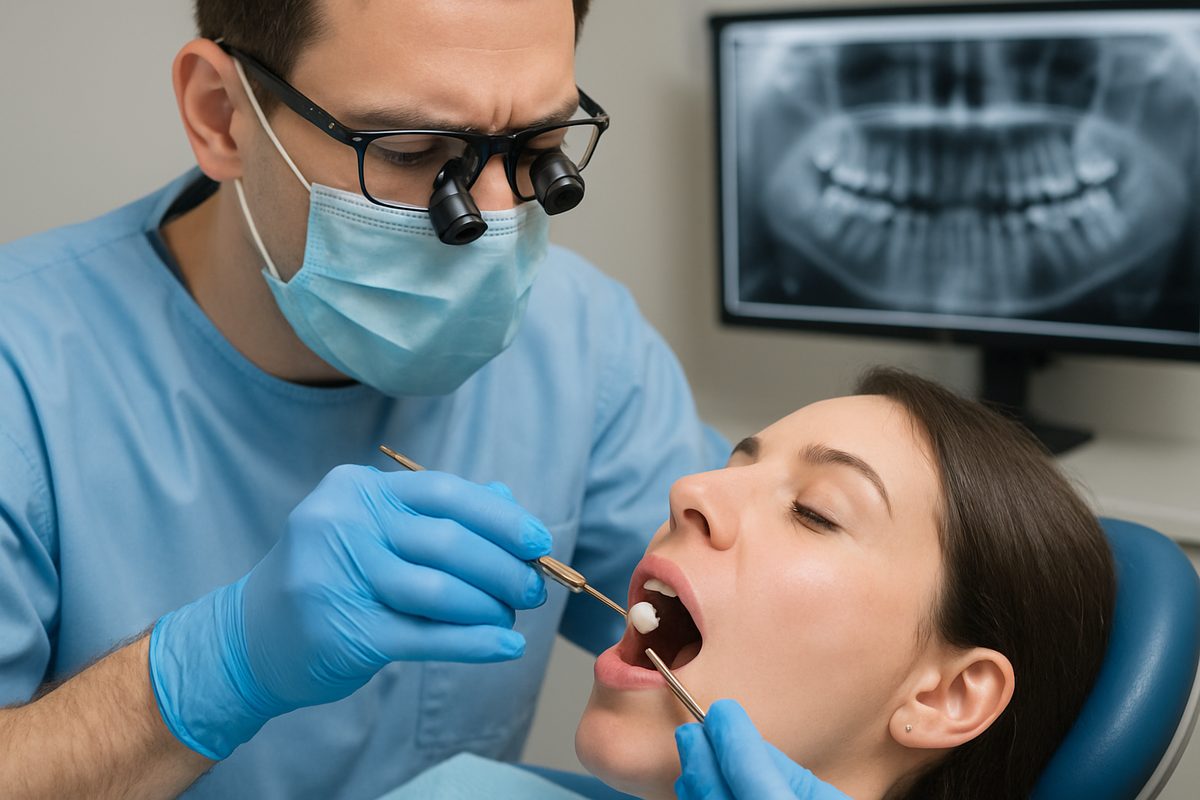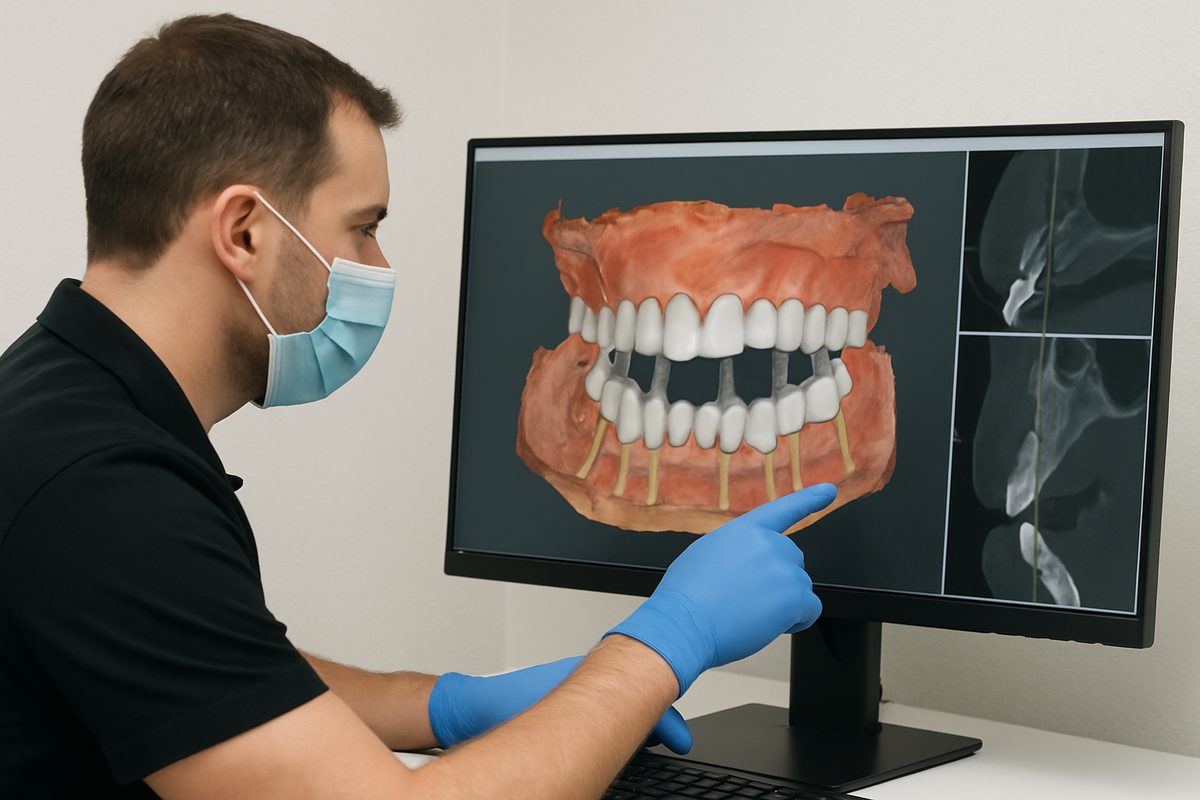Blog - [City], [state]
Tips, Facts, And The
Latest In Dentistry

The Complete Guide To The Procedure For Crowning A Tooth
Posted in Cosmetic Dentistry

The Complete Guide To The Procedure For Crowning A Tooth A dental crown is a cap that covers a damaged or weakened tooth to restore its shape, strength, and appearance. Many people need crowns after a large filling, root canal therapy, a cracked tooth, or to improve how a front tooth looks. This guide focuses on the procedure for crowning a tooth so you know what to expect at each step, how to prepare, and how to care for your new crown after treatment.
What is a dental crown and who needs one?
A dental crown is a custom-made cover that fits over a whole tooth above the gumline. Crowns protect teeth that are cracked, heavily decayed, or have had root canal treatment. They also restore chewing function and improve appearance for teeth that are misshapen or discolored. Your dentist may recommend a crown when a filling is too large, when a tooth is weakened, or when cosmetic improvement is needed.
Types of crowns
Porcelain fused to metal (PFM)
PFM crowns combine a metal core with a porcelain outer layer. They are strong and offer good appearance. They are often used on back teeth where strength is important. A downside can be a thin metal line near the gum over time, and they may wear opposing teeth slightly.
All-ceramic/porcelain crowns
All-ceramic/porcelain crowns look the most natural and are best for front teeth where appearance matters. They match tooth color well and don’t show any metal. They can be slightly less durable than metal-based crowns for heavy chewing forces.
Gold and metal crowns
Gold and other metal crowns are very durable and resist wear. Dentists often recommend metal crowns for molars or teeth that need strong bite support. They are less noticeable when used on back teeth but are not chosen for front-tooth cosmetics.
Same-day CAD/CAM crowns
Same-day crowns use digital scans and in-office milling machines to make a crown during one visit. This eliminates the need for a temporary crown and a second appointment. They are convenient and accurate for many cases.
Step-by-step: The typical procedure for crowning a tooth
1) Initial exam and diagnosis
Your dentist will review your dental history, take X-rays or digital scans, and examine the tooth. They will explain whether a crown is the best option and discuss materials, costs, and what to expect. This is the time to ask questions about anesthesia, timeline, and alternatives.
2) Tooth preparation
The tooth is numbed with local anesthesia. The dentist removes decay or an old filling and reshapes the tooth so the crown fits over it. If a large portion of the tooth is missing, a core buildup may be placed to create a solid base. This step is key to a proper, lasting fit.
3) Impressions or digital scans
After shaping the tooth, the dentist takes an impression or a digital intraoral scan. Traditional impressions use putty, while digital scans use a small camera to create a 3D model. Accurate impressions ensure the crown fits well and aligns correctly with your bite.
4) Temporary crown placement
A temporary crown protects the prepared tooth while the final crown is made. It helps you chew and keeps the tooth from shifting. Avoid sticky or very hard foods and take care when flossing around a temporary crown.
5) Lab fabrication or milling
The impression or digital file is sent to a dental lab, or the crown is milled in-office for same-day crowns. Lab-made crowns usually take one to two weeks. Materials are layered or milled and then stained and glazed to match your natural teeth.
6) Final fitting and cementation
At the final visit, the dentist checks the crown’s fit, color, and bite. Minor adjustments are made as needed. Once everything is right, the crown is permanently cemented or bonded in place. Your dentist will check your bite again and give aftercare instructions.
How to prepare for the procedure for crowning a tooth
Before your appointment, eat a light meal unless told otherwise and bring a list of medications. Arrange time off if you expect soreness. Write down questions about materials, warranty, or financing. If you have dental records or prior X-rays, bring them to help your dentist plan treatment.
Aftercare and what to expect after your crown
Mild sensitivity or soreness around the treated tooth and gums is normal for a few days. Use over-the-counter pain relievers as directed. Maintain good oral hygiene—brush twice daily and floss carefully around the crown. Avoid very sticky or hard foods for the first week. Regular dental check-ups help ensure the crown lasts many years.
Risks, complications, and warning signs
Possible issues include sensitivity, crown loosening, a rough bite, or infection if the tooth or root was not fully treated. To reduce risks, follow care instructions, keep appointments, and maintain oral hygiene. Contact your dentist if you have persistent pain, swelling, a loose crown, or if the crown feels high when you bite.
Cost, insurance, and alternatives
Crown cost depends on material, tooth location, and whether a root canal or core buildup is needed. Dental insurance may cover part of the cost, often after a deductible. Financing plans can help spread payments. Alternatives include onlays or veneers for smaller repairs, or extraction followed by an implant or bridge if the tooth cannot be saved.
When to contact your dentist after a crown
Call your dentist if you have severe or worsening pain, prolonged numbness, a crown that feels loose or falls out, persistent bite problems, fever, or swelling. Early attention can prevent more serious issues.
About Dental Arts of Oklahoma and why patients trust them for crowns
Dental Arts of Oklahoma provides comprehensive care across Catoosa, Tulsa, Bixby, Locust Grove, and Nowata. Led by Dr. Soren Michaelsen, the team uses digital X-rays, intraoral cameras, CBCT imaging, and same-day CAD/CAM milling to improve accuracy and patient comfort. Their goal is clear communication, precise care, and long-term results.
Next steps: scheduling a consultation
If you think you need a crown or want to learn more about the procedure for crowning a tooth, schedule a consultation. Bring recent dental records and a list of questions. The team at Dental Arts of Oklahoma will review options, costs, and timelines and walk you through each step for a confident, comfortable treatment experience.




